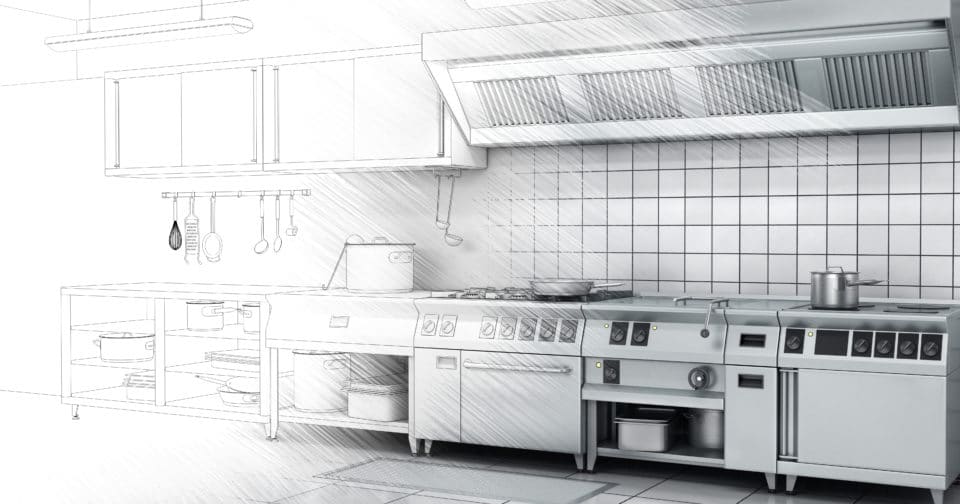
How do we, designers and consultants, deliver meaningful and effective results in an ever-changing world? The current typical response to a brief will be all about process and predictability. But is this the path to innovation for foodservice industry when the demand for consistency can be the enemy of creativity?
The challenge faced by all business, and the business of foodservice and hospitality is not immune; is that there is ‘No More Business as Usual’. But defining this new business seems always to be just out of reach. That flash of inspiration is inevitably overtaken somewhere else by a new innovation before the inspiration can reach the light of day. This continuous disruption means that business of business will always be playing catchup.
The role of the designer and consultant in this new world has to be to attempt to maintain a continuing view over the horizon beyond the day-to-day risks and challenges being briefed by our clients so that they are able to maintain and grow their businesses. Solutions that are right for the opening day that meet the brief without considering the possibility of disruption will be short lived. These can come through a significant event or the availability of a new technology.
Become a Futurologist
While significant events may be harder to predict, they will be inevitable at some point whilst the fact of technology and human responses to it are not just inevitable but are a continuum. The challenge for the designer and consultant is to not just to be capable of responding to the immediate but at the same time develop a continuous awareness of the probability of the new: become a Futurologist.
The role of the futurologist is to look beyond todays future: which is already here. That is to say, looking outwards rather than inwards for our new ideas. An emerging disruptive technology in one location or country will often have already become the normal in another in an earlier generation. Being globally aware in the industry should be a competence in a designer or consultant that is expected by clients for them to be certain that they are being advised on the most up to date possibilities.
Protecting clients from the future, or put another way, enabling them to take advantage of possibilities, will differentiate designers and consultants. Innovations are never really the result of serendipity; in the same way that a new idea can emerge at the same time in completely different continents, it will be the confluence of the same conditions in each place that seeds the idea: the innovation’s time has come. Always looking outwards rather than inwards is the way for new thinking.
The management strategy approach of Design Thinking to organisational challenges is well established, and helps make sense of complex connections between people, places, objects, events and ideas. The Design Thinking approach takes advantage of future opportunities rather than past events to spark the imagination.
Identifying the source of future opportunities is the challenge. Where will they come from and how to see the value in them? An open mid is a good start; there is never a wrong idea: it may not be right for the time, but it may be in the future. Storing these ideas is the first step to having the resources to imagining the future.
Identifying probabilities
A narrow and inward-looking approach to business can only at best result in incremental change rather than real innovation and change which “transforms existing conditions into preferred ones” (Prof Herbert Simon.) As a people business, both as providers and receivers of service, the starting point for this change has to be understanding the psychology of people and their interaction with their world. We need to know what people who interact with our business will be thinking before even they are aware of it. This anticipation is a result of identify probabilities; looking at “what if” scenarios that analyse the rapid progress of changing responses to technology with the basic human needs.
At the same time the technological change in the industry that will enable these future opportunities to emerge will come not from the existing portfolio of plant and equipment, unmediated by new thinking, but from a much wider perspective far from the familiar industry inputs. The futurologist is interested in everything and anything that can stimulate their imagination. Without imagination, the future can never be seen either literally or through AI.
But it takes a special sort of client working with a similarly engaged designer and consultant prepared to invest in real change. Not just a pastiche technological change using decorative robots delivering meals or coffee as an alternative to a vending machine but real change that actually transforms and improves the existing to become a new normal. Always questioning: why do we work the way we do: what are we really looking for, is there a better way? Always testing our thinking against a world of possibilities rather than the narrow view offered by the existing; the all too easy approach to problem solving rather than the effort needed to push the boundaries.
We should by now have moved well beyond accepting working the way that we always have into a new world of possibilities.
Tim Smallwood FFCSI
